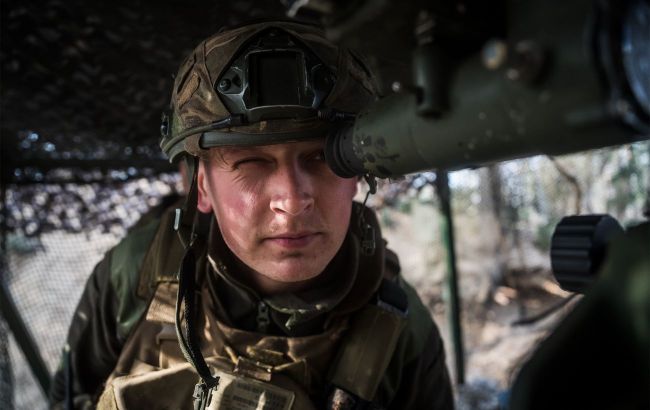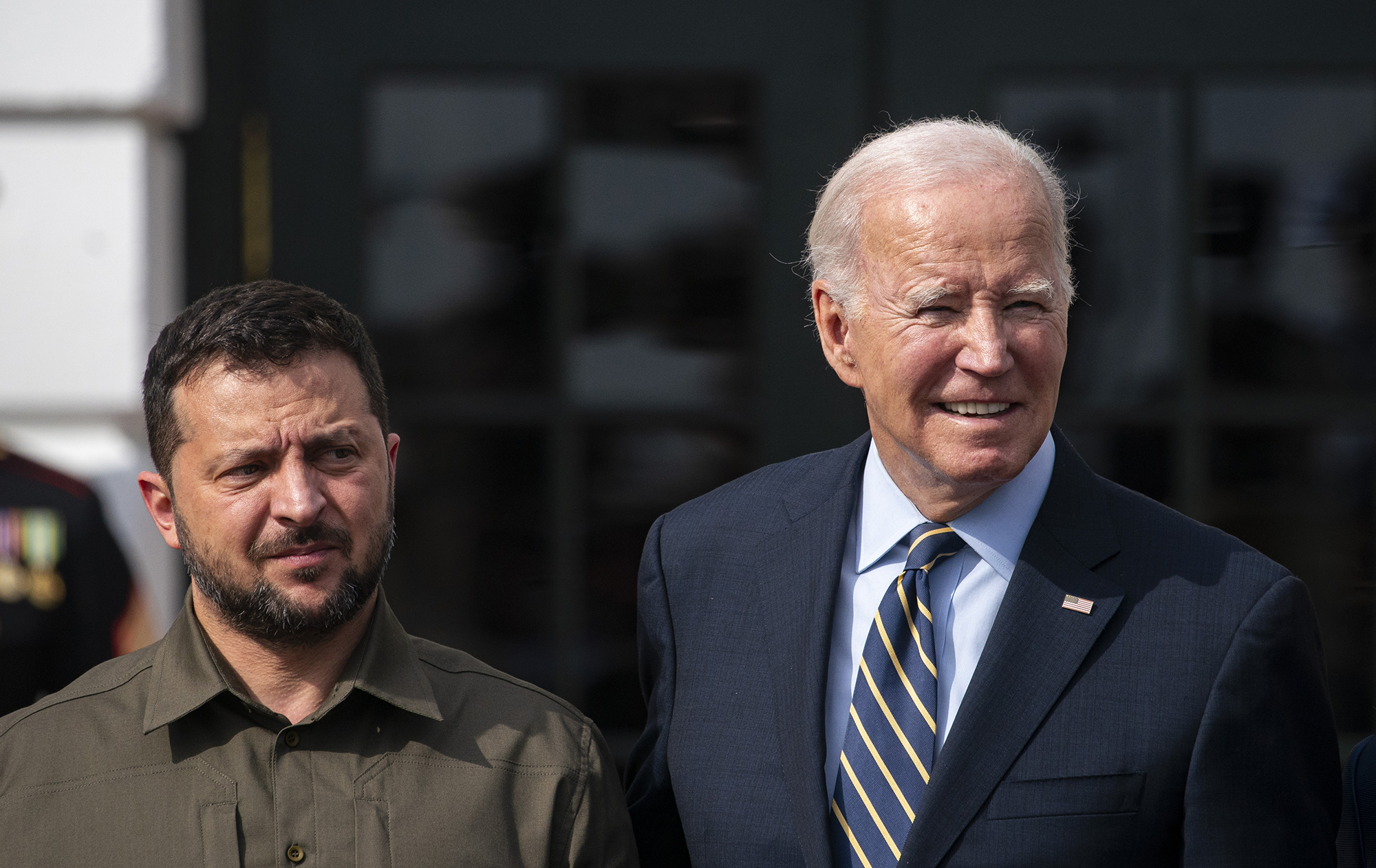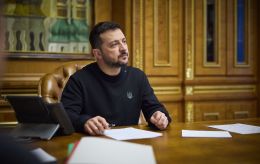US assistance shifting Ukraine frontline dynamics: Kyiv and Western perspectives
 Ukrainian soldier with M777 howitzer (photo: Getty Images)
Ukrainian soldier with M777 howitzer (photo: Getty Images)
After several months of debates, the United States finally passed a $60 billion aid package for Ukraine. Much-needed equipment and ammunition for the frontlines will start arriving in the country soon. Its impact on the battlefield is detailed in the article on RBC-Ukraine.
Contents
- US aid package
- How American weapons will shift frontlines
- ATACMS missiles: Strikes on frontlines or Russia's rear
This week, the US Congress approved the long-awaited military aid package to Ukraine worth $60 billion. Almost immediately, President Joe Biden signed it into law. Ukrainian forces may receive American ammunition and equipment by the end of the week, as part of the aid is already in Germany.
For almost half a year, the Ukrainian army has been without substantial military support from one of its main donors. During this time, the Russian army managed to advance on multiple fronts. The enemy's major breakthrough did not occur, as despite critical shortages of ammunition, equipment, and personnel, Ukrainian forces have been holding back Russian troops.
After the Congress's decision, military analysts are asking how the resuming of American supplies might affect the battlefield. Can the Ukrainian Armed Forces (UAF) slow down the enemy's advance, stop it, or attempt a counteroffensive?
US aid package
The US was deeply immersed in political debates while approving aid for Ukraine took a long as disagreements started at the end of 2023. During this period, Ukrainian politicians repeatedly warned of the critical deterioration on the frontlines. President Zelenskyy openly stated while interviewed by Western media that without American aid, Ukraine is losing the war.
Russia, taking advantage of the window in supplying military equipment and ammunition to the UAF, intensified its activities, advancing on the frontlines and shelling Ukrainian cities. As a result, territories were lost, and Ukraine's energy infrastructure suffered extensive damage.
Many Western speakers, including Americans, criticized Washington for dragging its feet and playing political games for half a year. On April 21, Phillips O'Brien, Professor of Strategic Studies at the University of St Andrews, said, "Don't underestimate the importance of these losses during the celebration of the resumption of US aid. The US has made Ukraine bleed."
The media immediately published a list of equipment and ammunition that Ukrainian forces would receive. It includes shells, missiles for RIM-7 and AIM-9M air defense systems, Stinger MANPADS, small arms and ammunition, HIMARS ammunition, 155mm and 105mm artillery shells, 60mm mortar rounds, Bradley IFVs, HMMWV and MRAP armored vehicles, various tactical vehicles, antitank systems, armor-piercing mines, spare parts, field equipment, and more.
 Volodymyr Zelenskyy and Joe Biden (photo: Getty Images)
Volodymyr Zelenskyy and Joe Biden (photo: Getty Images)
Long-range ATACMS missiles caused the resonance, at one time they were considered "inaccessible" weapons from the West. As soon as President Volodymyr Zelenskyy officially announced ATACMS included in the US aid package, the media immediately reported that long-range missiles were handed over to Ukraine back in March. Probably, with the help of ATACMS Ukraine struck the airfield in Dzhankoy, destroying important strategic facilities. It is not yet known what range missiles the Armed Forces will receive in the new package - 160 or 300 km. The first aid package under the new law is worth about 1 billion dollars.
By the way, not all 60 billion will go directly to the purchase of weapons for Ukraine. Of this amount, 23 billion will be spent on replenishing the Pentagon's reserves, 14 billion will go on equipment for the Armed Forces, and the rest will finance American production, training, and economic assistance to Kyiv.
How American weapons will shift frontlines
This is a massive aid package that can indeed influence the frontline where there's a critical shortage of almost everything, according to Ivan Kyrychevskyi, an expert from the Defense Express inform agency.
"At the moment, what we need is not so much the quality of aid but its gross volume - the more, the better. This is a situation where all types of weapons are helping us in combat operations. Therefore, it doesn't matter what's in the first military aid package or what quality it is. We need it," Kyrychevskyi said in a comment to RBC-Ukraine.
He points out that the UAF has been fighting for almost half a year with limited US assistance and fairly restricted supplies of equipment from Europe, which was either waiting for active action from Americans or failing to mobilize production resources fully. According to the Stockholm International Peace Research Institute, Ukraine spent over $60 billion on the war last year.
"On the one hand, we already have a feeling that we can defend ourselves, but on the other hand, regardless of whether it's $60 billion or, say, $20 billion that Americans pour on us, the main thing is that it will be a supporting structure giving us a sense of stability," Kyrychevskyi added.
Analysts describe the current nature of the fighting in Ukraine as a classic stage of attrition warfare. In this type of conflict, the side with more resources leads. With depleted reserves of almost everything, Ukrainian forces still managed to prevent the enemy from advancing far. Now, with replenished resources, according to Kyrychevskyi, the UAF can slow down the Russian troops. But there are more optimistic assessments: with a large number of artillery shells, Ukrainian forces may not just slow down but stop the Russian forces, noted military expert Pavlo Narozhnyy.
"As soon as we receive artillery shells, the nature of combat operations will change. Because now we destroy the enemy at close range, all by infantry, unfortunately. But with an adequate number of artillery shells, we will destroy the enemy on approaches, not at the moment when they storm our trenches," Narozhnyy said.
Armor will also be very relevant. For example, during the prolonged defense of Avdiivka, Bradley IFVs helped Ukrainian forces. Hoping to conduct a swift assault and capture the city, the Russian army lost in the Avdiivka defense 14,000 of their soldiers.
 Ukrainian soldiers on Bradley IFVs (Photo: Vitalii Nosach/RBC-Ukraine)
Ukrainian soldiers on Bradley IFVs (Photo: Vitalii Nosach/RBC-Ukraine)
We cannot ignore the anti-aircraft missiles. After active attacks on Ukrainian energy, Western media came out with rather panicky but useful statements for Kyiv, saying that Ukraine no longer has ammunition for the air defense system.
While Europe searches its warehouses and transfers Patriot missile units and other modern systems, America is sending new missiles for them. This will not only help cover cities, including Kharkiv and Odesa, which Russian forces regularly shell, but also partially close the front, destroying planes with bombs.
The American aid package will help stabilize the situation in the combat zone and cover the sky over Ukraine. There's no talk of a counteroffensive yet – it's important to accumulate resources for that, a luxury Ukrainian forces cannot afford at the moment. Besides, both defense and counteroffensive require personnel. Therefore, alongside the US military aid package, a new wave of mobilization starts in Ukraine in May.
"The US doesn't send us soldiers, only weapons. If we don't have enough people, who will shoot from the howitzer or tank? We need people. For now, talking about our ability to counterattack is unrealistic," added Pavlo Narozhnyy.
ATACMS missiles: Strikes on frontlines or Russia's rear
American long-range ATACMS missiles may not be considered game changers in the current war, but they can still provide important assistance. When it became known they would be included in the new US aid package, Western media immediately reported that ATACMS had arrived in Ukraine earlier. As a result, the aforementioned strikes took place on the military airfield in occupied Dzhankoy on April 17.
Then, information appeared online that ballistic missiles hit a military facility. Later, some reports said that remnants of the ATACMS MGM-140 modification, with a range of up to 300 km, were found at the fire site. By the way, Americans hesitated for a long time to provide Ukraine with long-range missiles. According to Reuters, one of the factors influencing the final decision was the Russian strikes on Ukrainian cities with North Korean missiles.
It is still unknown which specific missiles the US has provided to Ukraine, but even if it is a modification with a range of up to 160 km, it will pose problems for the Russian forces, says military and political expert Oleksandr Kovalenko from the Information Resistance Group.
"ATACMS has various modifications. There is a cassette-type modification that effectively works against airfields, and large concentrations of human resources. There is a fragmentation-explosive type, a concrete-piercing type - they are against fortified objects, for example, against an underground headquarters or a fortified, monumental object. For example, some bridge," said Kovalenko in a comment to RBC-Ukraine.
The Kerch Bridge, which connects Crimea with mainland Russia, is a legitimate target for Ukrainian forces, according to all military rules. It is the main artery primarily for the southern front. Having occupied the southeastern part of Ukraine, the Russian army started building a railway. However it is not the most reliable way to supply the front with the necessary equipment, so the bridge remains a priority. If the Ukrainian Defense Forces manage to destroy it, by taking out supports or several sections through which the railway passes, the consequences for Russia will be catastrophic.
 ATACMS missiles (Photo: flickr.com)
ATACMS missiles (Photo: flickr.com)
"As a result (of bridge loss - ed.), there will be the loss of complete functionality of the material and technical support of the southern grouping of occupation forces. Within a month, they will be unable to resist the Ukrainian Defense Forces if they lose such logistics, that is, they will not be able to hold the defense themselves. This may end, for example, with their retreat from one or another foothold," added Kovalenko.
Experts believe that using ATACMS deep into Russia makes no sense – these missiles are better used to destroy military targets on the front or nearby. This way, they will work more effectively for the Ukrainian forces. Besides, it is not yet clear whether the US will agree to the use on Russian territory.
"ATACMS is a missile that should target frontline targets because the range there is relatively short. If they told us - you'll get a thousand Tomahawks now, but you can't bomb Russia, then there would be a reason to be upset. But spending ATACMS just to bomb the Russians in Belgorod is fun but why?" adds Kyrychevskyi.
Ukraine has already shown that it can act in the Russian rear, using its own developments. Confirmation is the numerous strikes on Russian refineries. Therefore, most likely, the Armed Forces of Ukraine will continue to use American missiles to cause notable damage to the Russian aviation industry by hitting air bases, destroying planes, as well as eliminating command posts, air defense systems, human resources, and warehouses.
***
America openly delayed the military aid package for Ukraine. As a result, there were though not decisive, but still deliberate advances of Russian forces on the front and the ruined energy infrastructure of Ukraine. After strikes on the Trypillia thermal power plant, Zelenskyy said that the station was destroyed because, at some point, the air defense forces simply ran out of missiles.
The US finally dealt with the pre-election fever and managed to allocate aid to Ukraine. Against this background, Europe has also become more active – on the eve of Biden signing the bill, the UK announced a record package of equipment and weapons worth $617 million. Perhaps, after Washington's decision, other European countries will also show their support.
With new deliveries into the Ukrainian front, there is a chance to at least balance the situation in the combat zone and stop the enemy's advance. If the flow of equipment does not stop and remains stable, and mobilization succeeds in Ukraine, it is possible that the Ukrainian Armed Forces will gain an advantage and Russia will start to exhaust itself.

